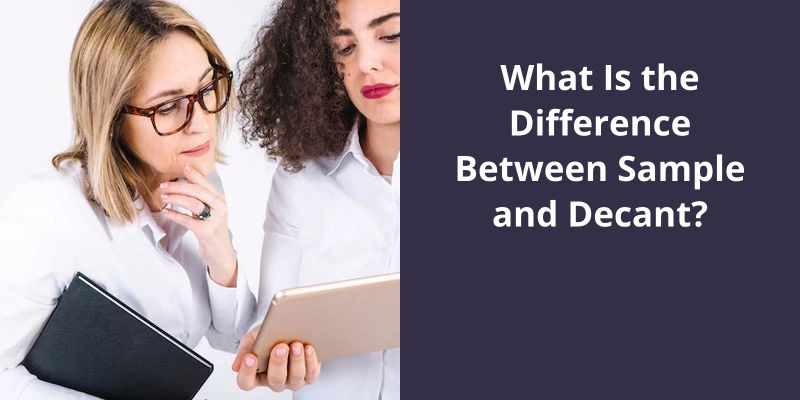The difference between a sample and a decant involves size and purpose. A sample is typically a smaller amount of perfume, often given away for free by companies for promotional purposes and usually contains about 1 to 2 ml. A decant, on the other hand, is a larger quantity of perfume, transferred from a full-sized bottle into a smaller container, typically ranging from 5ml to 30ml. Decants are usually bought, allowing a user to try a higher-end perfume without having to purchase the full product, or to have a travel-sized version of their favorite scent.

What Does 30 Ml Decant Mean?
30 ml decant refers to a process that allows perfume enthusiasts to get a smaller amount of fragrance from a larger bottle. Typically, perfumes come in bottles that are between 50-100 ml, and this can be expensive especially when it comes to high-end fragrances. Decanting is a way to save money and still enjoy your favorite aromas.
The process of decanting involves carefully transferring perfume from a large bottle into a smaller one with a sprayer or dropper. This process makes it easier to transport the perfume and apply it on the go.
It allows them to share samples with their friends and trade or swap perfumes with others. This is especially useful for fragrances that are hard to find or discontinued, as it allows people to try them without having to purchase a full bottle.
To ensure the quality of the perfume remains intact during decanting, it’s important to use clean and sterile equipment. Any residue or foreign contaminants can affect the fragrance and potentially ruin it. People who’re new to decanting should be careful and do their research before attempting the process.
It’s a popular option among perfume enthusiasts, collectors, and people who want to try new scents without breaking the bank. With the right equipment and knowledge, anyone can decant their favorite perfumes and enjoy them in a more convenient and cost-effective way.
How to Label and Organize Decanted Perfumes for Easy Identification?
- Use clear, labeled containers to store your decanted perfumes.
- Label each container with the name of the perfume, the brand, and any other identifying details.
- Keep a record of your decanted perfumes in a notebook or spreadsheet, including the date decanted and any other relevant notes.
- Organize your perfume collection by brand, scent family, or any other system that works for you.
- Consider using a labeling machine or printable labels for a more professional look.
- Store your decanted perfumes in a cool, dry place away from direct sunlight and heat to maintain their quality.
- Be sure to handle your decanted perfumes with clean hands to avoid contamination and spoilage.
- Rotate your perfume collection regularly to avoid expiration and keep your scents fresh.
Conclusion
In summary, the difference between a sample and a decant is that a sample allows for a thorough testing of a particular fragrance, whereas a decant is a smaller, more affordable version of the full bottle that allows for a preliminary experience. Both options provide the opportunity to make a conscious and informed decision when investing in fragrance, whether it be in the form of a sample or a decant, and can serve as useful tools in building a personal collection of scents. Ultimately, both methods allow individuals to explore the world of fragrances and discover new scents that appeal to their unique preferences and style.





